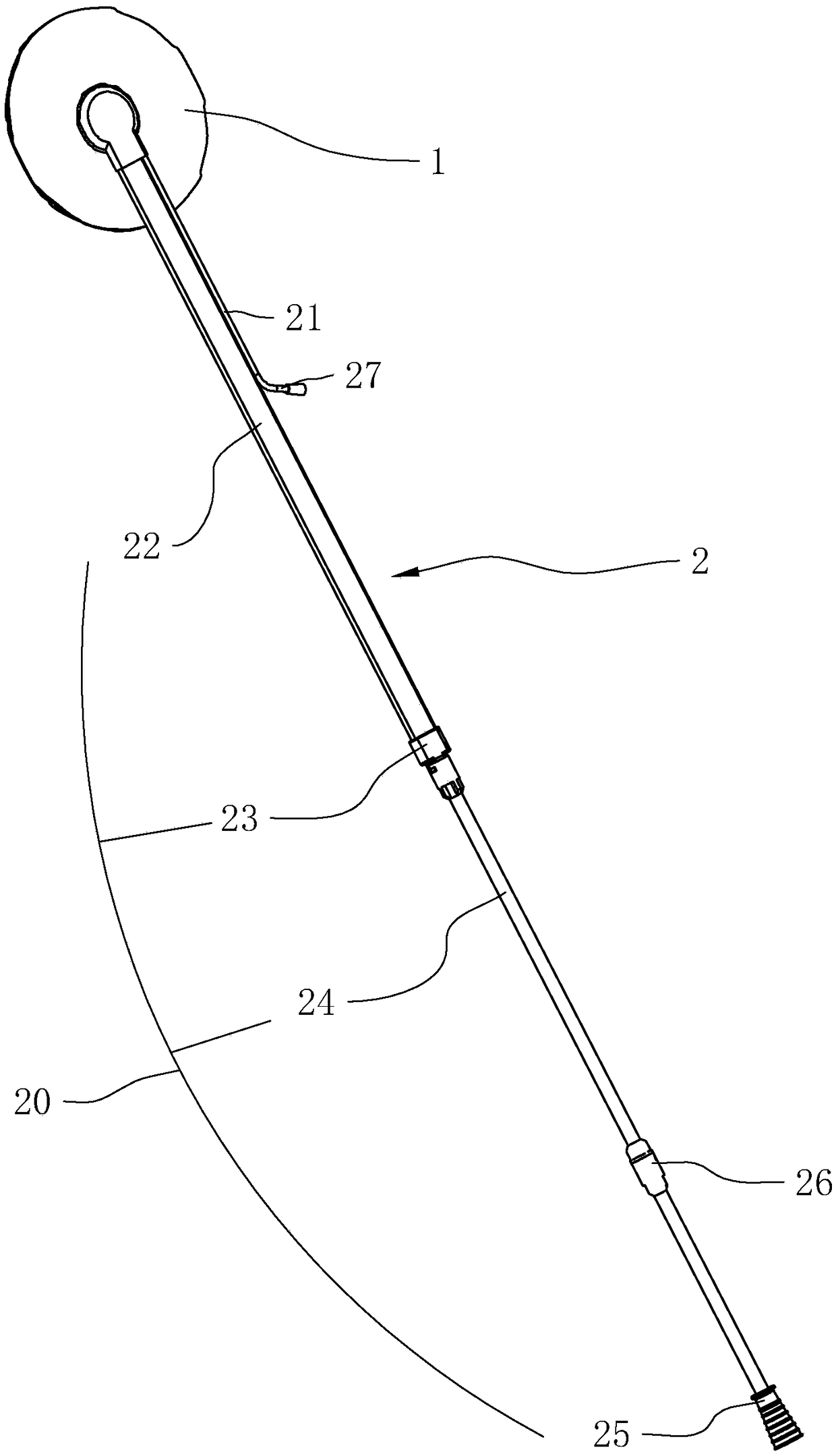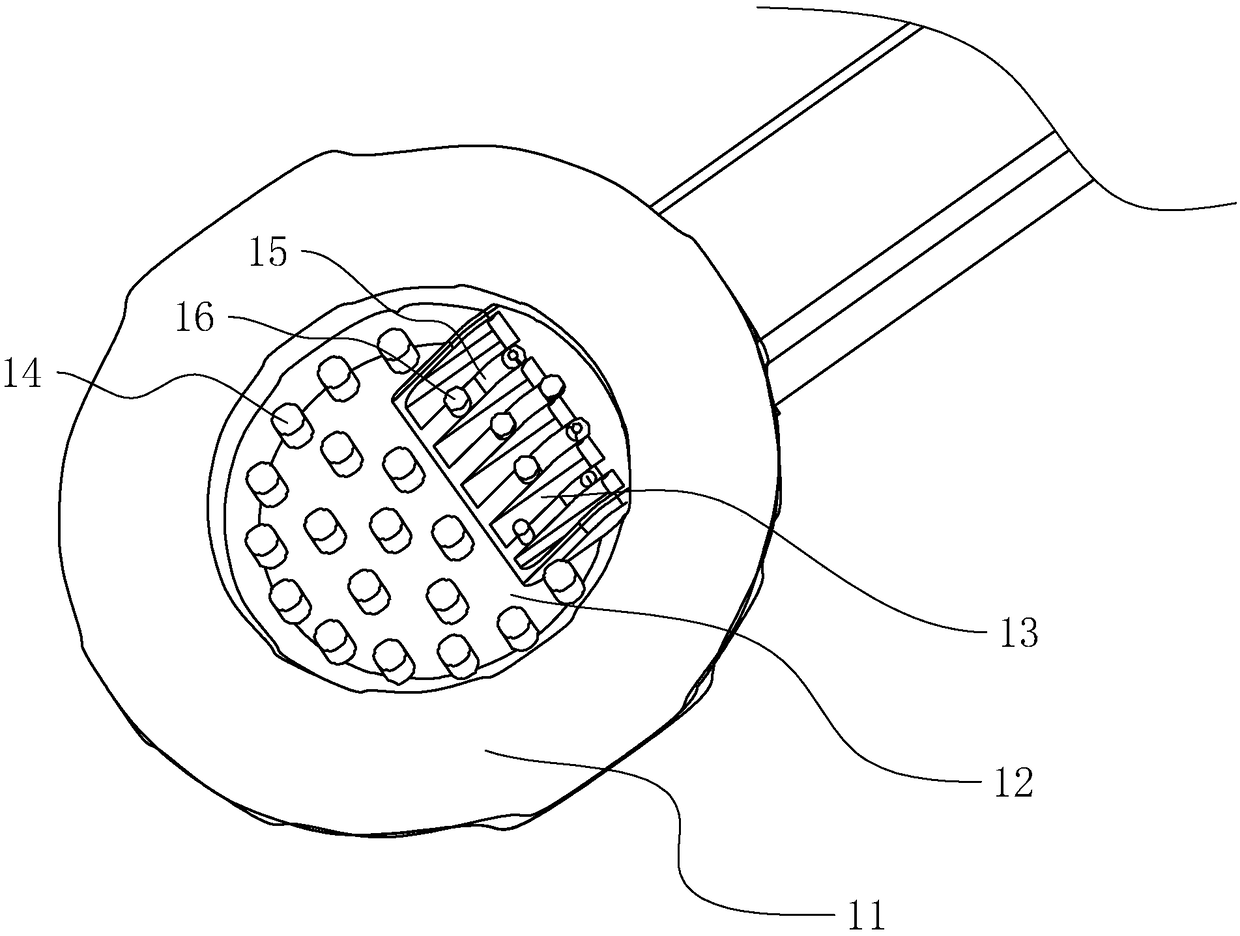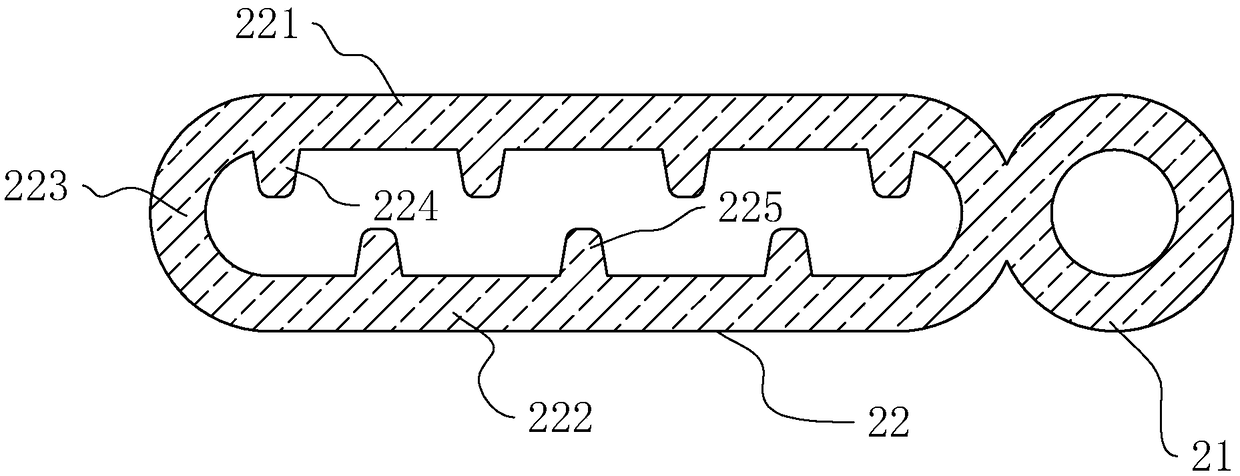Sucker line device
A suction cup and pipeline technology, which is applied to suction devices, hypodermic injection devices, extraction and pumping systems, etc., can solve problems such as the discomfort of pressure and discomfort in the extraction pipeline, and avoid the probability of air leakage from the machine and the safety of the pipeline. The effect of chaotic and delaying the use of the machine
- Summary
- Abstract
- Description
- Claims
- Application Information
AI Technical Summary
Problems solved by technology
Method used
Image
Examples
Embodiment 1
[0036] Embodiment 1, a suction cup piping device, such as figure 1 As shown, it includes a suction cup 1 and an outlet pipe 2 whose one end is integrally connected to the suction cup 1 . In the process of negative pressure cleaning, the suction cup 1 is connected to the biological semipermeable membrane sealing sponge and the entire wound surface and cavity, and at the same time, the end of the outlet pipe 2 away from the suction cup 1 is connected to the negative pressure source, and the suction is continued, so that the entire wound surface is fully closed The state of negative pressure drainage.
[0037] like figure 2 As shown, the suction cup 1 includes a ring-shaped fitting portion 11 disposed on the radially outer side and a concave portion 12 arranged on the radially inner side; the fitting portion 11 forms an annular closed space to ensure the fitting of the suction cup 1 . The inner concave portion 12 is recessed inward to form a vacuum cavity in the annular closed...
Embodiment 2
[0049] Embodiment 2: The difference between Embodiment 2 and Embodiment 1 lies in the structure of the inner lead-in end 13 of the concave portion 12 and the rib 14 . The lead-in end 13 extends into the cavity of the inner concave portion 12 in a flat tubular shape. The lead-in end 13 is provided with dividing bars 15 at equal intervals along the width direction. 13 is divided into multiple entrances. The protruding ribs 14 are elongated, and the elongated protruding ribs 14 are arranged in the inner concave portion 12 in a dotted line.
Embodiment 3
[0050] Embodiment 3: The difference between Embodiment 3 and Embodiment 1 lies in the structure of the inner lead-in end 13 of the concave portion 12 and the rib 14 . The lead-in end 13 extends into the cavity of the inner concave portion 12 in a flat tubular shape. The lead-in end 13 is provided with dividing bars 15 at equal intervals along the width direction. 13 is divided into multiple entrances. The protruding ribs 14 include a cylindrical central protruding rib 14 arranged in the middle and a waist-shaped columnar outer protruding rib 142 arranged on the radially outer side of the central protruding rib 141 . The number of the central protruding ribs 141 is four. Distributed at equal intervals along the circumferential direction, the outer convex ribs 142 are wrapped in three and a half layers on the outside of the middle convex ribs 141, and are distributed at equal intervals along the circumferential direction.
PUM
 Login to View More
Login to View More Abstract
Description
Claims
Application Information
 Login to View More
Login to View More - R&D
- Intellectual Property
- Life Sciences
- Materials
- Tech Scout
- Unparalleled Data Quality
- Higher Quality Content
- 60% Fewer Hallucinations
Browse by: Latest US Patents, China's latest patents, Technical Efficacy Thesaurus, Application Domain, Technology Topic, Popular Technical Reports.
© 2025 PatSnap. All rights reserved.Legal|Privacy policy|Modern Slavery Act Transparency Statement|Sitemap|About US| Contact US: help@patsnap.com



